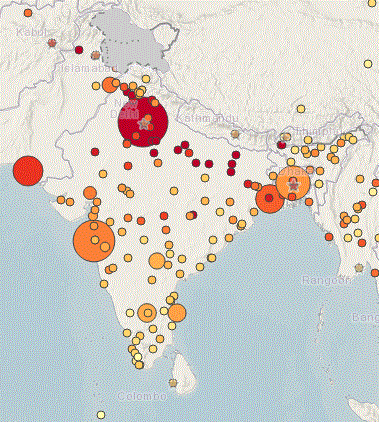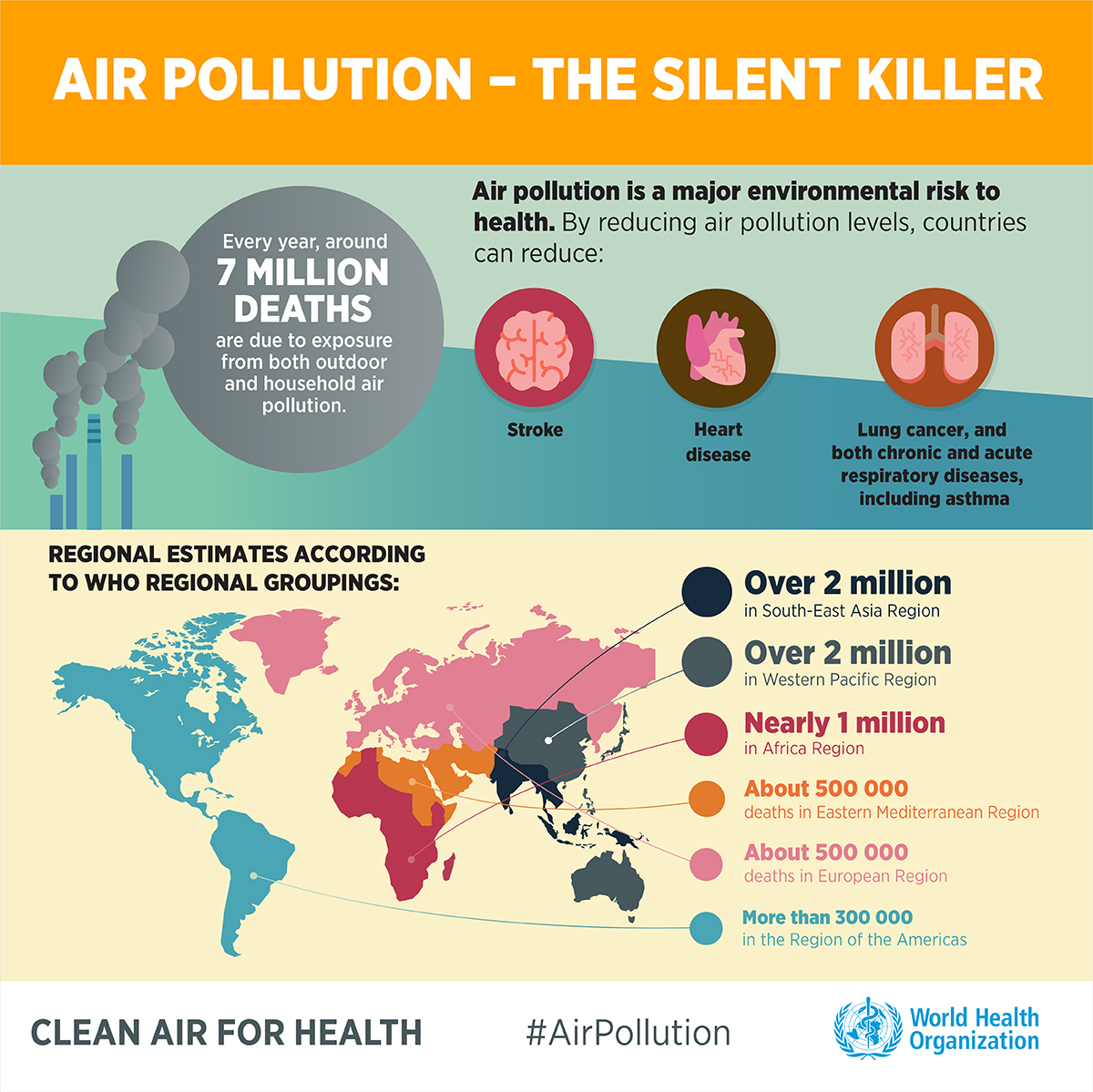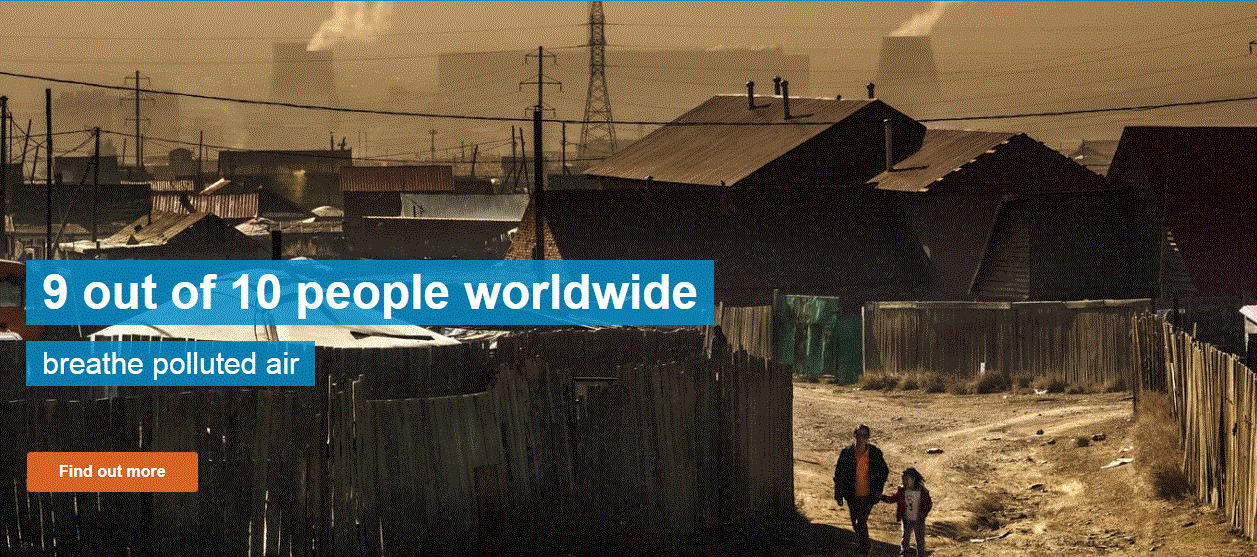WORLD NEWS | VISHESHBAAT NEWS | May 2, 2018 1:21 PM IST
Key Facts about pollution in the world
- Air pollution levels remain dangerously high in many parts of the world. New data from WHO shows that 9 out of 10 people breathe air containing high levels of pollutants.
- WHO estimates that around 7 million people die every year from exposure to polluted air.
- Ambient air pollution alone caused some 4.2 million deaths in 2016, while household air pollution from cooking with polluting fuels and technologies caused an estimated 3.8 million deaths in the same period.

As per the WHO Global Urban Ambient Air Pollution Database , it is revealed that there has been rampant pollution in the world and pollution is on the rise. The study suggests that only 10 per cent of the people in the world have access to clean air while the rest of the people more than 90 per cent of them are forced to inhale polluted air. This is very significant study and if the data and study sources are to be believed then this is an alarming situation. The polluted air has negative effects on not only the health of the people but on the environment as well. The study also ranks cities on the basis of pollution and as per reports 14 of the 15 most polluted cities are in India. Thus, it seems that it is time for India to stand up against the menace of pollution and gradually cut down on pollution. The cities in India with most polluted air include the metros, Gwalior, Kanpur besides others.
Here is the list of top cities with highest ‘Annual mean, ug/m3 pollution level in the world.
Iran Zabol
India Gwalior
India Allahabad
Saudi Arabia Riyadh
Saudi Arabia Al Jubail
India Patna
India Raipur
Cameroon Bamenda
China Xingtai
China Baoding
India Delhi
India Ludhiana
Saudi Arabia Dammam
China Shijiazhuang
India Kanpur
India Khanna
India Firozabad
India Lucknow
China Handan
Pakistan Peshawar
India Amritsar
India Gobindgarh
In the past two years, the database – now covering 3000 cities in 103 countries – has nearly doubled, with more cities measuring air pollution levels and recognizing the associated health impacts.

According to the latest urban air quality database, 98% of cities in low- and middle income countries with more than 100 000 inhabitants do not meet WHO air quality guidelines. However, in high-income countries, that percentage decreases to 56%.
